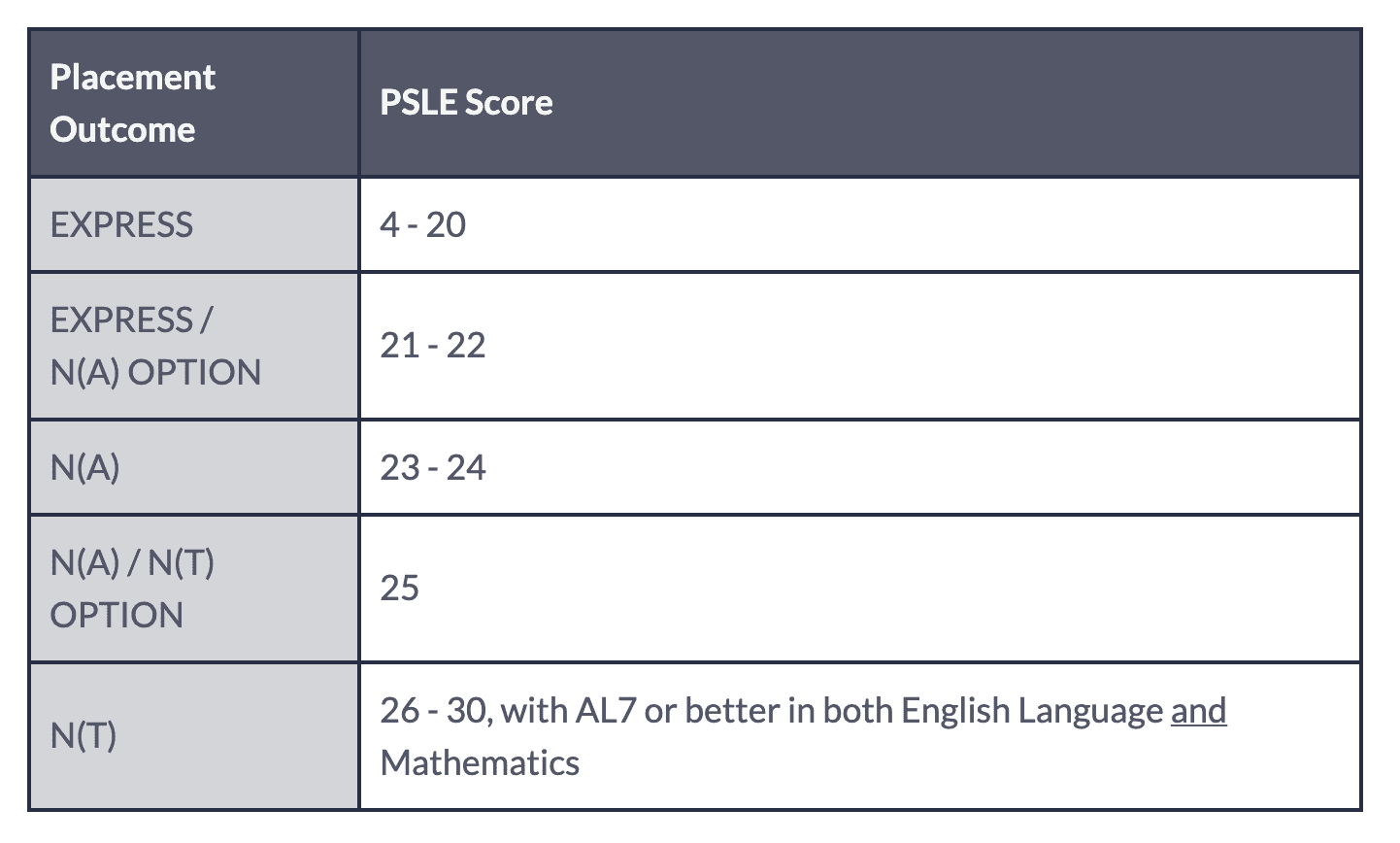
Students taking the PSLE this year will use the new PSLE scoring system to determine their grades. Instead of the T-score, they will be using Achievement Levels (ALs) t0 to calculate their PSLE score.
Achievement Levels are akin to the O-Level and A-Level grading system, which use raw mark ranges to determine grades. These range from AL 1 (for raw marks of 90 and above) to AL 8 (for raw marks below 20).

Students who take Foundation subjects will also use the AL system, which ranges from AL A to AL C. Their grades will then be translated into the equivalent standard level AL to determine their PSLE score.

For students who are exempted from Mother Tongue, they will be assigned a score between AL 6 to 8 by taking reference from peers who have similar scores for English, Mathematics and Science. This is to maintain parity with students who take Foundation Mother Tongue, who will have a score between AL 6 to 8.
Adding the ALs of the four PSLE subjects (English, Mathematics, Science, and Mother Tongue) taken will yield the PSLE score of a student. This means that PSLE scores can range from 4 to 32, with 4 being the most desirable score.
Students will be eligible for different secondary school courses based on their PSLE scores.

These changes were announced in 2016, when the current batch of Primary 6 students were in Primary 1.
Differences between the new and old PSLE scoring system
This marks a departure from the T-score system used previously, which used a relatively more complex formula to determine a student’s PSLE score.

Using the formulate above, calculating the T-score of a subject required knowing the raw mark obtained [X], the mean (average) mark [m] and the standard deviation (spread of marks around the mean mark) [s]. Adding up all the four T-scores would yield a student’s PSLE score.
This means that the Achievement Level system is ostensibly easier to calculate, to get a rough indication of a student’s expected PSLE score, based on preliminary examinations and practice papers done. Starting with last year’s Primary 5 cohort, students were given their Total Achievement Level (AL) Score in their report books, much like how secondary school students receive their aggregate (L1R5 and L1R4) scores in their report books.
Rationale for the changes
MOE’s reason for these changes is to reduce the fine differentiation between scores for students of a young age, since the T-score means that there are over 200 different scores, while the new Achievement Level system has 29 different scores. This puts less pressure on trying to grab the last mark (as it may make a different in the T-score), as opposed to aiming to fall in a certain band.
This is also in line with efforts to encourage parents and students to select secondary schools based on factors such as CCAs available, location, and school culture, instead of placing too much focus on academics.

Uneven mark ranges for the Achievement Levels
One of the more hotly discussed issues is the fact that the raw mark ranges are not equally distributed. Comparisons are often made between ALs 2 to 4 (which each have a five-mark range) with AL 5 (ten-mark range) and AL 6 (twenty-mark range).
According to MOE’s FAQ, the expectation is that slightly half of the PSLE cohort will score AL 1 to 4 for Standard subjects, and that around half of the students taking standard subjects today score above 75. This goes against the usual assumption that the “passing mark” is 50 (the website cautions that there is no passing or failing mark for each PSLE subject, or the PSLE as a whole).
As a result, the smaller mark ranges for the higher ALs is to take that into account.
How this affects future secondary school postings
MOE will roll out full subject-based-banding (SBB) for secondary schools by 2024. This means that students can choose to take each subject at three different levels (G1, G2, G3, with G3 being the most advanced level). The Express, N(A) and N(T) streams will be phased out in 2024 as students are able to take different subjects at different levels of complexity, instead of only being allowed to take subjects at a complexity dictated by their course. In 2027, a single national certification will replace the O-Levels and N-Levels, which takes into account the three different subject levels.
The system has been progressively rolled out to selected schools since 2020. Students from the N(A) and N(T) courses may take subjects at the Express or N(A) level if they have scored AL 5 and above in that subject for the PSLE.
This article was written for and first published on Yahoo Lifestyle SEA.
Want to do well for the PSLE? Sign up for my PSLE Composition Workshop this June!

Follow Marcus Goh (yes, referring to myself in third person) on Facebook and Instagram for more (presumably) good updates!
I’m an independent scriptwriter who’s written for popular shows like Lion Mums, Crimewatch, Police & Thief, and Incredible Tales. I’m also a Transformers enthusiast and avid pop culture scholar. You can find me on social media as Optimarcus and on my site.
Send me an email if you want to get in touch!
Leave a Reply